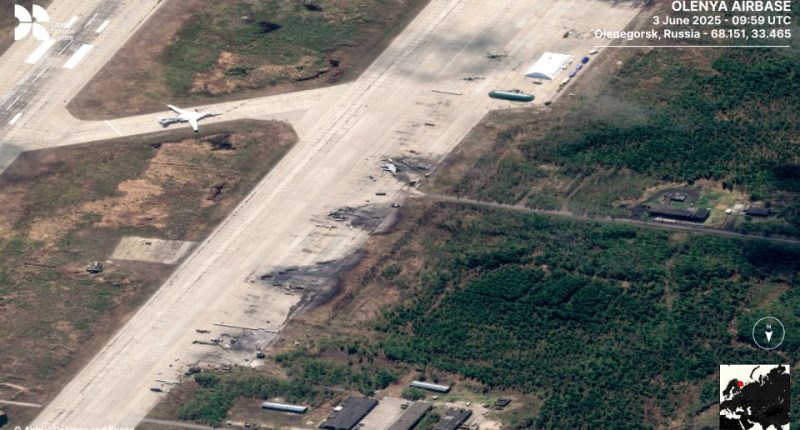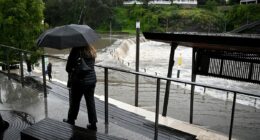Share this @internewscast.com
THE FULL extent of Ukraine’s devastating drone blitz on airfields inside Russia has been laid bare by new satellite pictures.
Masterful Operation Spiderweb inflicted $7billion worth of damage, and left Putin’s precious fleet of bombers in tatters.
Stunning satellite photos show patches of scorched earth where valuable Russian jets one lay.
The debris has been hastily swept away – perhaps an attempt to conceal the scale of the destruction.
Elsewhere, wreckages of warplanes blown to pieces remain on the tarmac, with fragments strewn across the runway.
The covert drone plot, planned over 18 months, aimed at four airfields deep within Russia, reminiscent of the most daring raids of WWII that shifted the tide against the Nazis.
Volodymyr Zelensky oversaw the operation and stated, “It’s genuinely satisfying when something I authorized a year and six months ago comes to fruition and deprives Russians of over forty units of strategic aviation.”
“We will continue this work.”
Putin’s doomsday bomber fleet was crippled with 41 – a third of the total – of his most prized aircraft lying in smouldering wrecks on tarmac.
Ukraine said the sneak attack was worth $7bn (£5.2bn) in damage to Russia – caused by just 117 cheaply made drones.
Following the humiliating and costly blow, Putin’s stooges came out and accused a Ukrainian ex-DJ of being the mastermind.
Desperate to save face, Russian war bloggers named the man they believe was pulling the leavers as Artem Timofeev.
Artem, 37, is a former Ukrainian DJ.
Putin’s sleuths think they have identified that he owned the lorries used to carry the containers to the strikes.
Alleged drivers who transported the crates and were tracked down by bloggers shared similar stories of taking instruction from an “Artem,” the Daily Mail reports.
They appeared to have thought they were transporting wooden frame houses, but instead they moved kamikaze drones into strike position.
The drones and the containers were smuggled into Russia and then pieced together right under Vlad’s nose.
Clueless lorry drivers then parked the containers next to Russian airbases – where they sat and waited in plain sight.
Zelensky said the drivers were led far away from their vehicles – as Ukraine looked to hide those involved being captured and interrogated the FSB.
Then, on the morning of June 1, the fleet of flying bombs rose over the far reaches of Russia – and the most daring military operation of the war began.
Nondescript shipping containers parked in laybys and verges had attracted little attention – before their lids blew open and the drone swarms poured out.
Russian civilians stood in awe as they saw the drones zoom out of the containers and head in the direction of the airbase.
The craft buzzed as they took off into the air and only had to travel a short distance to their valuable targets.
Each of the 117 drones had their own dedicated pilot and Russia had little defences to protect their bases and stop them.
One hapless Russian soldier stationed at an air base recorded himself standing just meters from several burning wrecks.
























